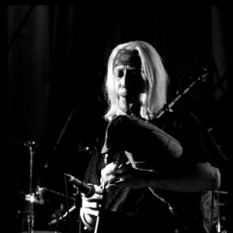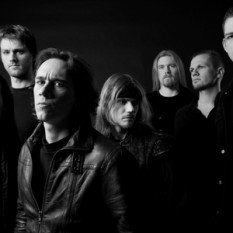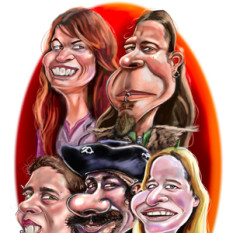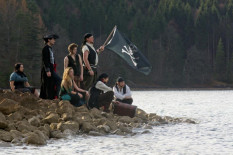In English: "medieval rock."
Rock music inspired by various aspects of the European Middle Ages (sometimes confused with the Baroque or Renaissance periods, which tend to also be favored by the medieval-folk bands). The songs are performed with medieval instruments (sometimes in addition to modern guitars/drums, etc.), styling, and center on folkloric themes and medieval romances (in the literary sense of ballads and stories).
Mostly very hard, driving rock treatments, but occasionally mellow. The performers often like to dress up in pseudo-medieval, pseudo-ancient, or fantasy garb. Cross-reference terms: medieval rock, medieval folk-rock, Neue Deutsche Härte, folk metal, Goth, gothic. Lyrics relate to poetry, magic, tragedy, word play, and social commentary often equaled in volume by instrumentation.
The subgenre first flowered in Germany, so most of its groups are from that region; the singing is mostly in English and German. Starting in English was natural for the purpose of reaching the widest audience; then moving to German lyrics characterized a self-conscious attempt to reclaim and venerate an older Teutonic classical and knightly past. Song themes often draw on old sagas, myths, and folk ballads of Europe.
The subgenre subsequently caught fire in Eastern Europe, Scandinavia, and Spain, notably, but this is not to exclude popularity in other geographic areas. The most likely candidate for having fathered the genre is Subway to Sally (q.v.). Its success inspired other groups to be created and join the movement. .




